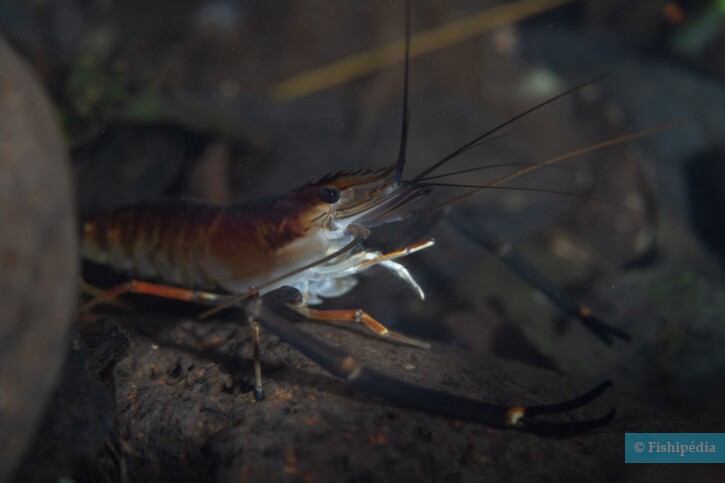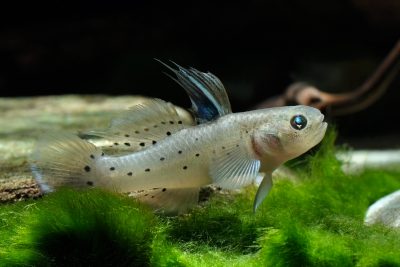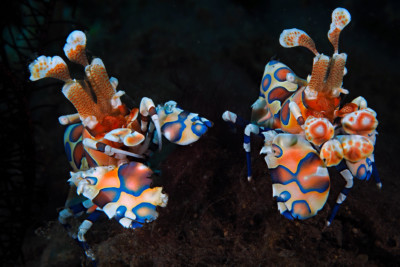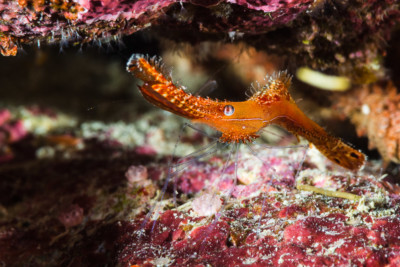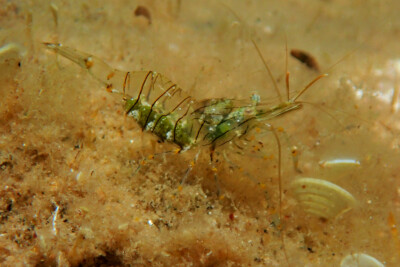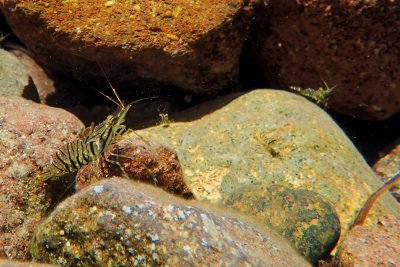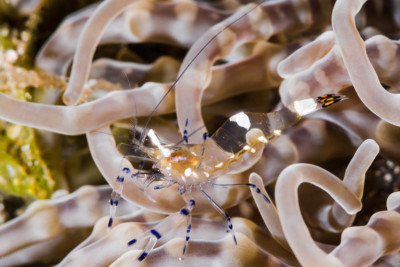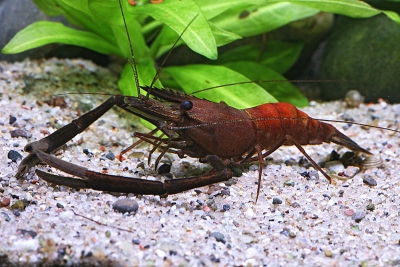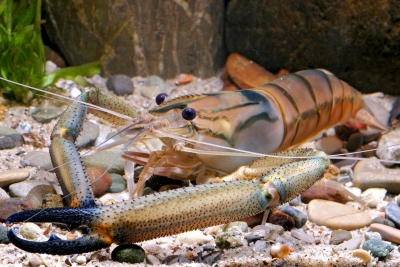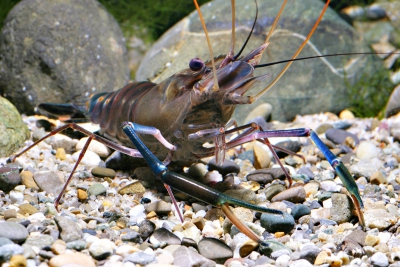Macrobrachium lar
| Scientific name | Macrobrachium lar |
|---|---|
| Descriptor | Fabricius |
| Year of description | 1798 |
| IUCN category (World) | LC |
| Family | Palaemonidae |
| Genus | Macrobrachium |
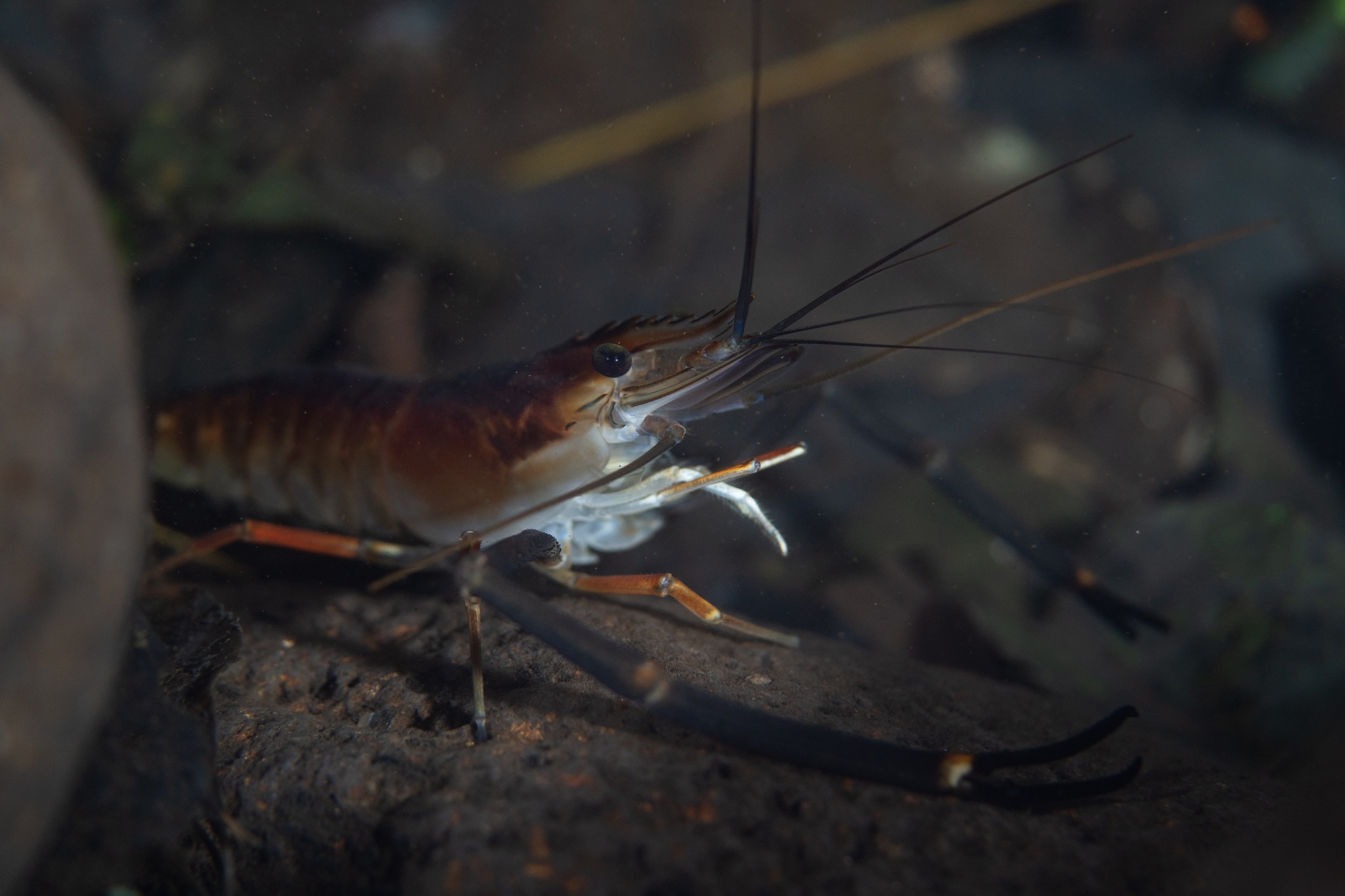

Introduction
Macrobrachium lar is a fresh water crustacea.
This sheet is currently being prepared. The texts currently proposed come from our data model or are being drafted. To request priority for this content, you can write to us HERE.
Who is it?
Morphology
-
Average size13 cm
-
Maximum size20 cm
-
Mimicryplants
-
Average size13 cm
-
Maximum size20 cm
-
Mimicryplants
How to recognize this crustacea ?
Macrobrachium lar measures around 13 cm. The dominant males can however reach 20 cm. this crustacea is unicolore with a predominantly marron body.
Of elongated form, like all the shrimps, it has 5 pairs of legs and a segmented carapace at the level of the abdomen which ends in a tail in fan cut for swimming.
This species belongs to the "long arm shrimp" group because its second pair of claws is of imposing size. These appendages are used mainly to defend themselves, but also to catch food.
Sexual dimorphism
The adult male is bigger than the female.
Behaviour & Life cycle
-
Sociabilitysolitary
-
territorialNo
-
VenomousNo
-
Way of livingdiurnal
Like all crustaceans, Macrobrachium lar molts whenever it becomes cramped in its shell. Before the hardening of its new body, it is more vulnerable and spends a good part of its time hidden. This mechanism, very complex, allows the periodic renewal of the exoskeleton and part of the internal skeleton. It is also during the moult that the females become fertile.
Macrobrachium lar hunts in the stalk and is one of the predators of its biotope. Opportunistic, it does not hesitate to attack any smaller animal nearby.
Macrobrachium lar is a crustacea solitary naturally found near the bottom. This species is carnivorous .
Although Macrobrachium lar is non-territorial, it is sometimes aggressive towards other species.
Macrobrachium laris not a very good swimmer, especially when it reaches adulthood. It moves mainly with the help of its legs.
Reproduction
-
Reproductionovipare
-
Migratory speciesYes
Macrobrachium lar is a crustacea ovipare. This species is amphidromous. It gives birth to larvae in fresh water which are immediately carried by the current of the rivers to the sea. These develop in salt water until a juvenile stage and then migrate from the sea to the interior of the land to continue their growth.
Harmless species
This species does not represent any particular threats to humans when encountered in its natural environment.
Origin and distribution
What is its habitat?
Natural environment characteristics
-
Temperature21 - 26 °C
-
pH (acidity)6.8 - 7.5
-
FlowStrong and Medium
Biotope presentation
Macrobrachium lar is most often found at a depth between 0m and 2m. However, it is not impossible to find this species at other depths.
Macrobrachium lar prefers well oxygenated waters in current areas and rapids. It frequents fast flowing waters where the bottom is strewn with pebbles, wood or leaves carried by the current. It can be found not far from waterfalls .
Species of the same biotope
To go further
Sources & Contributions
Participation & Validation
The Fishipedia team and specialist contributors are committed to providing high-quality content. However, although the information comes from scientific sources or testimonials from specialists, the cards may contain inaccuracies.

Benoit Chartrer
Translation
Translation done with the valuable contribution of our translators, who make this information available to a wider audience. We sincerely thank them for their commitment.
Scientific partners
Tags
Species of the same family
Same genus
Species of the same biotope
